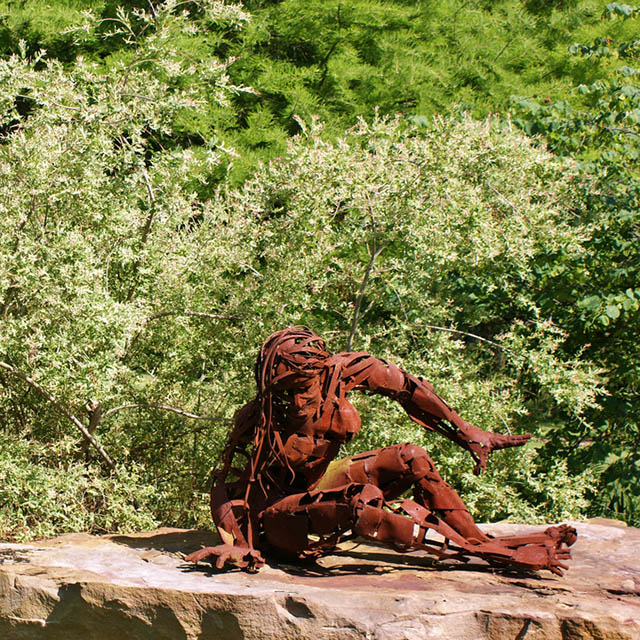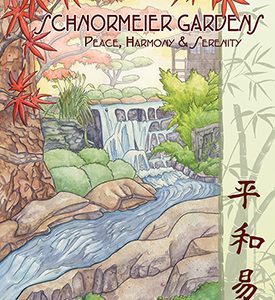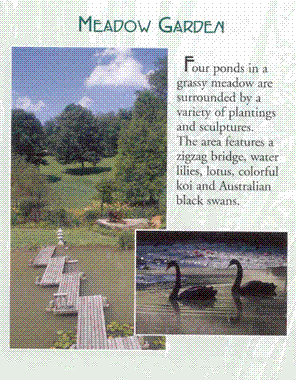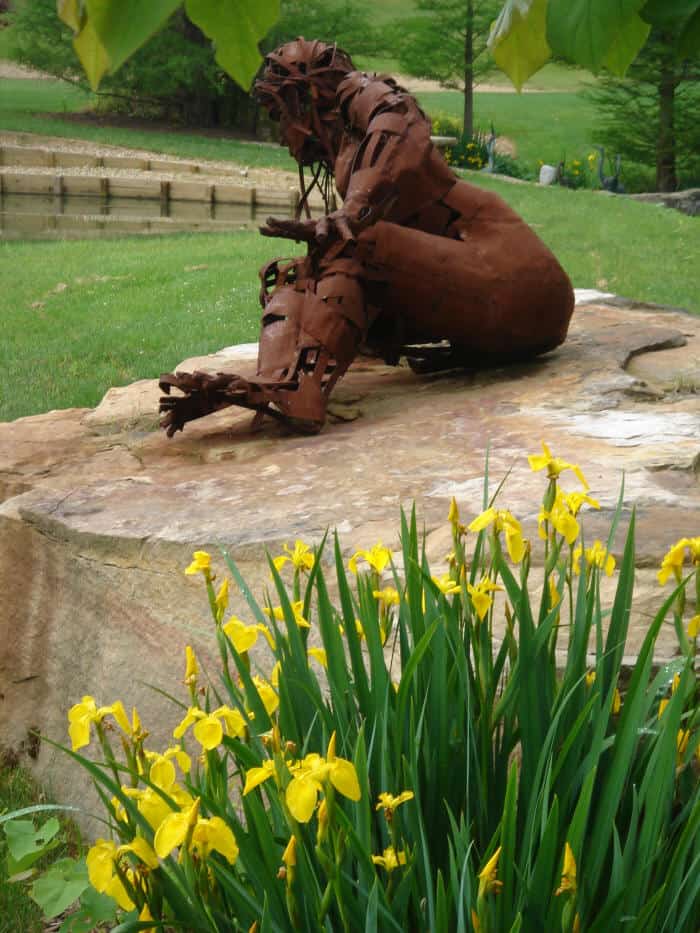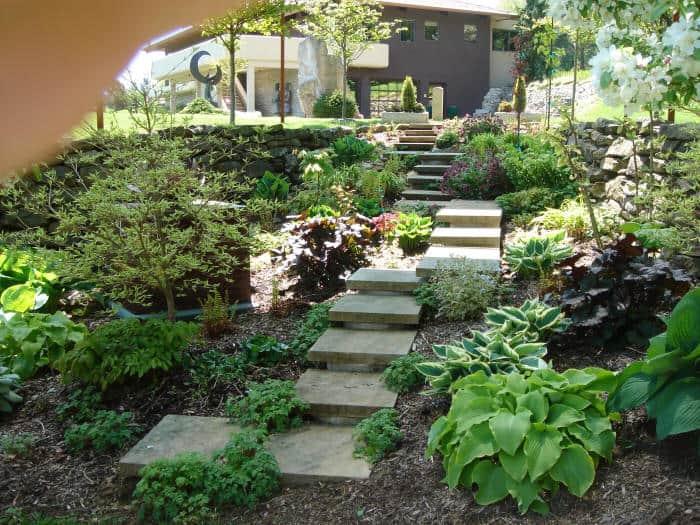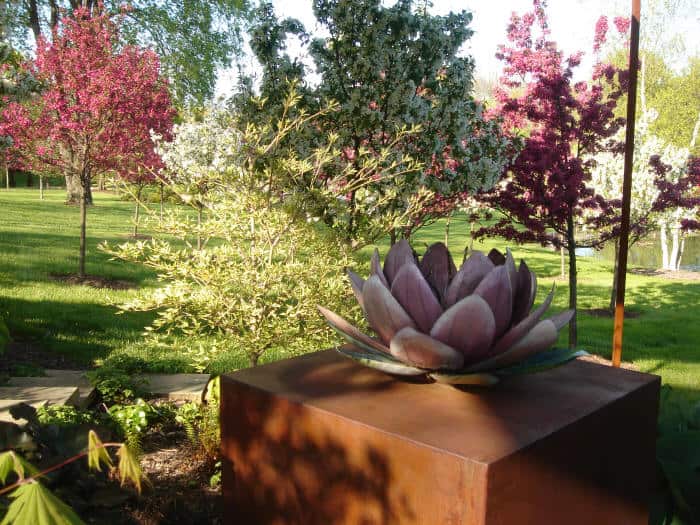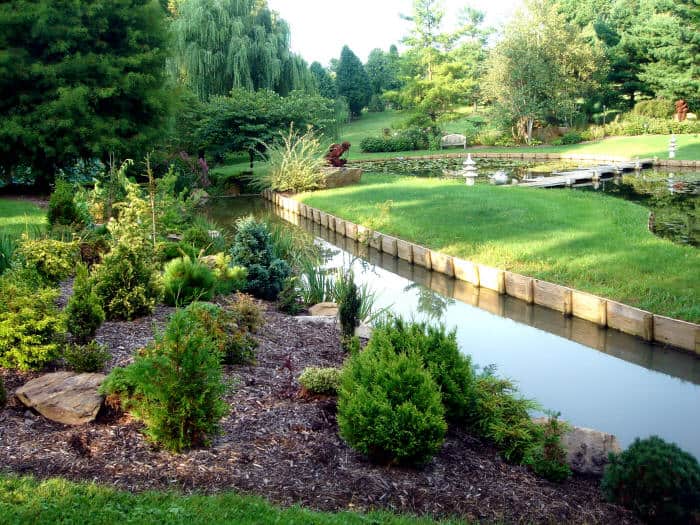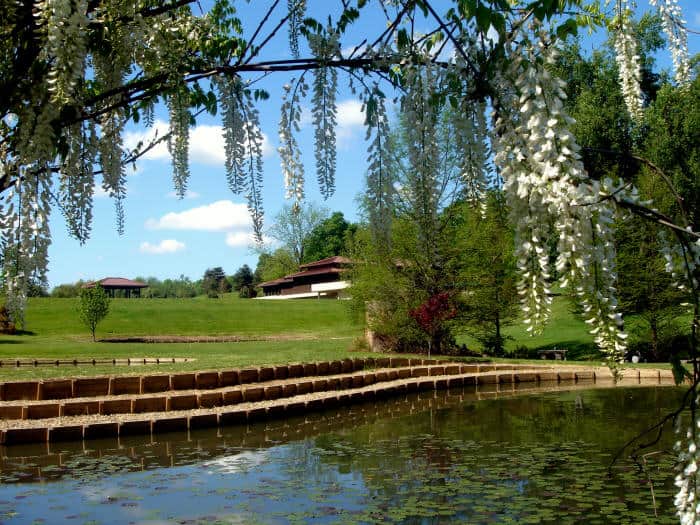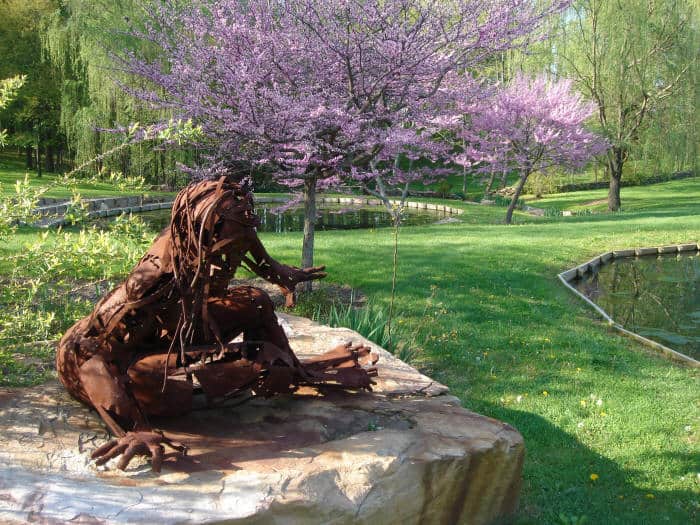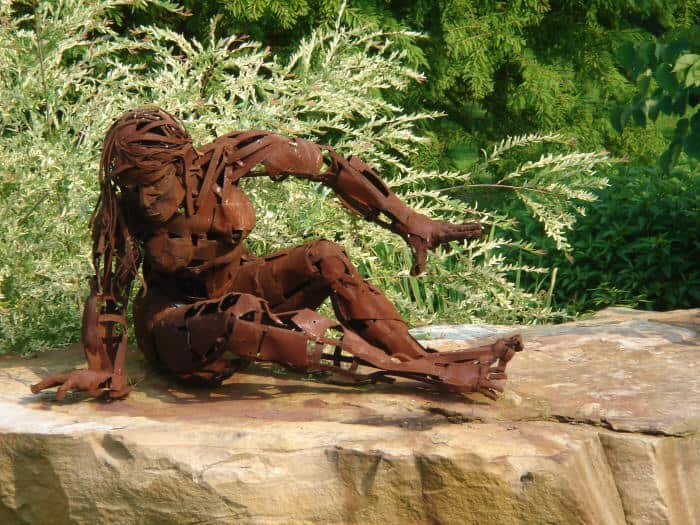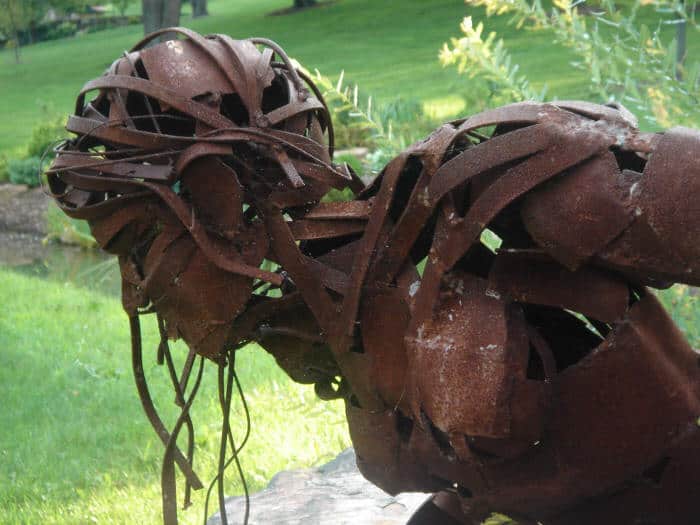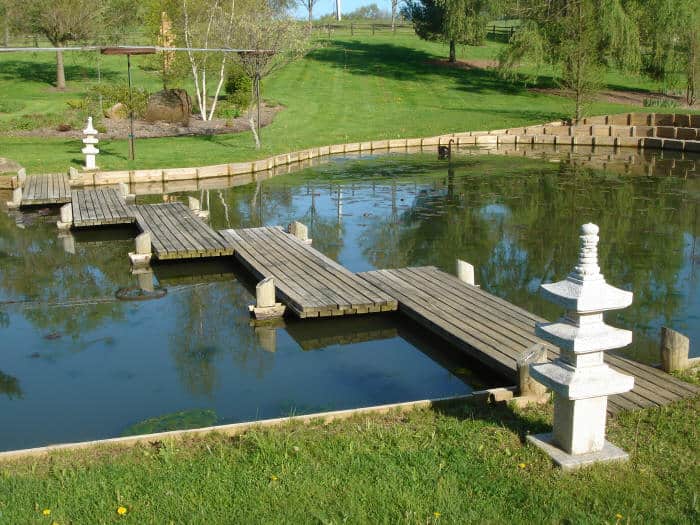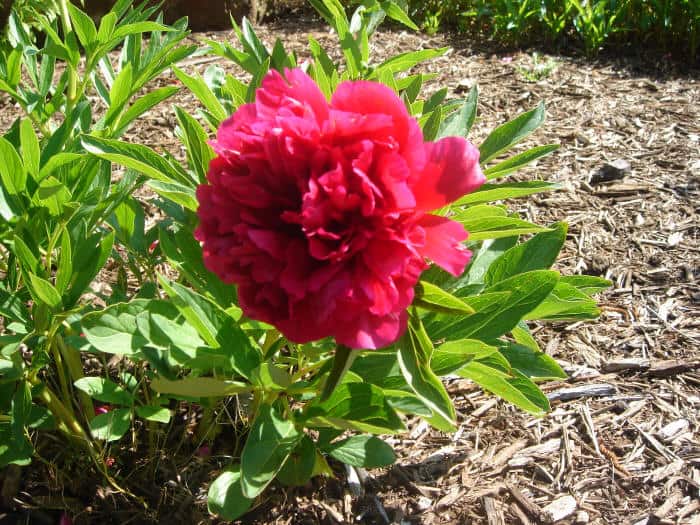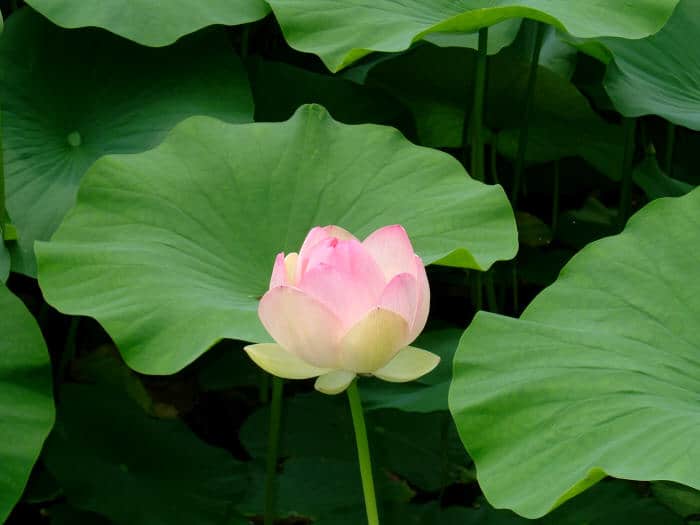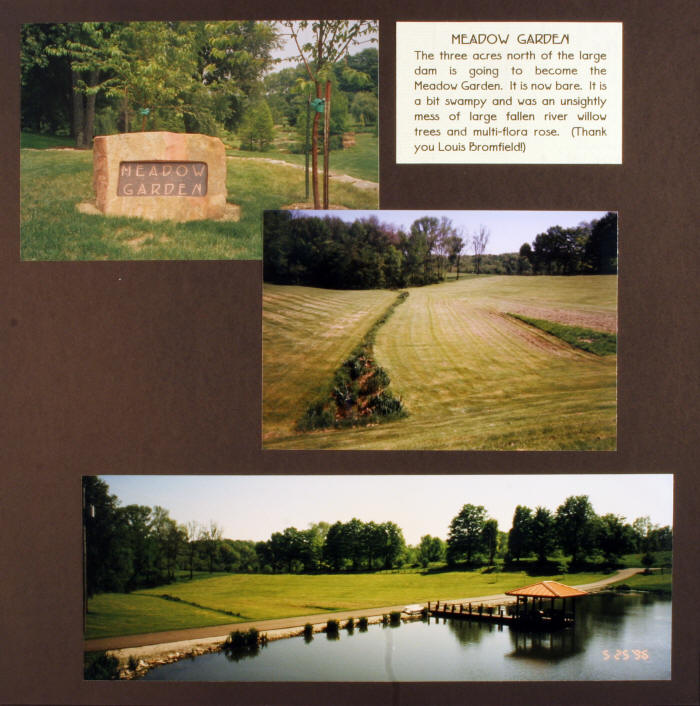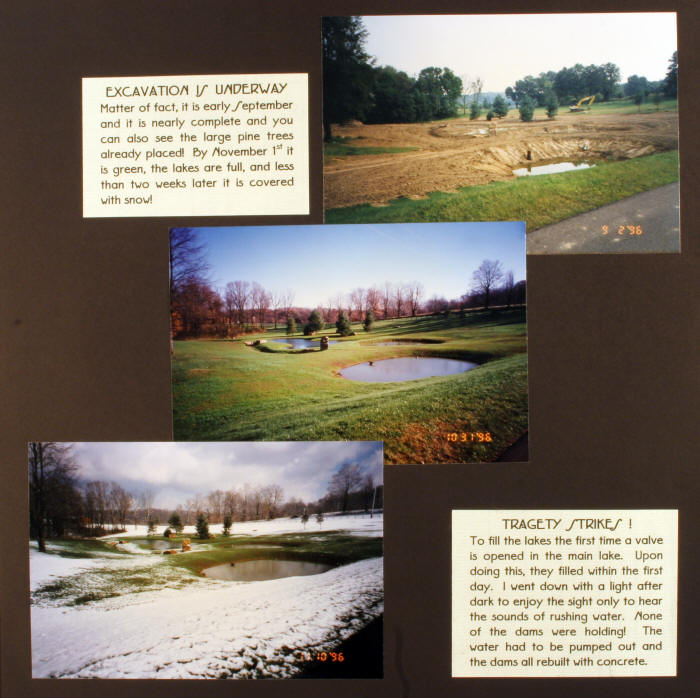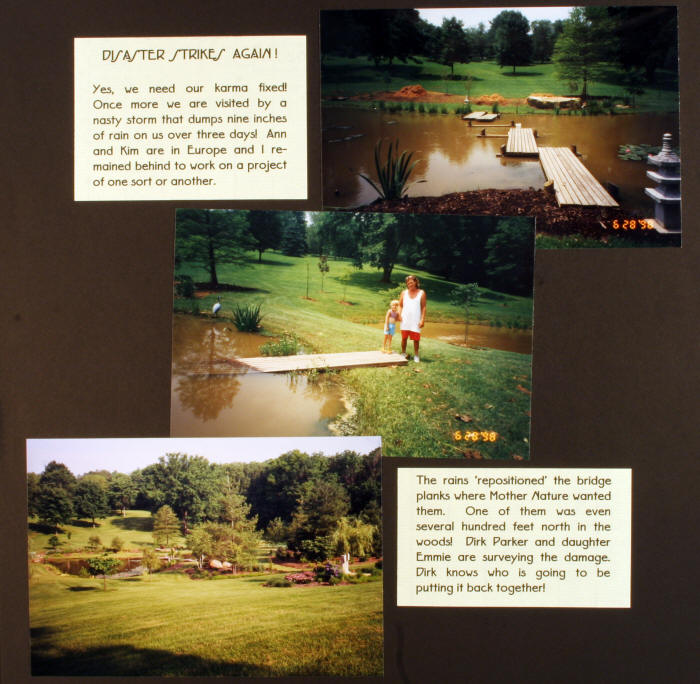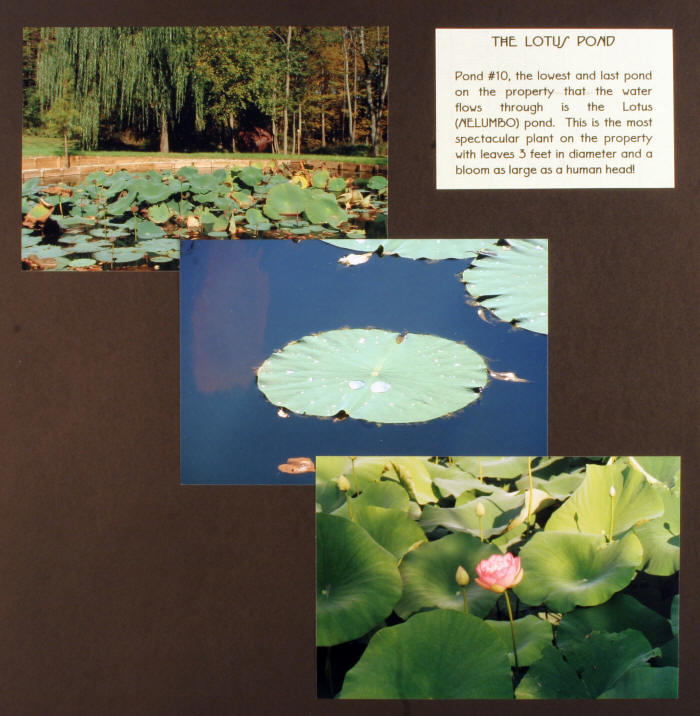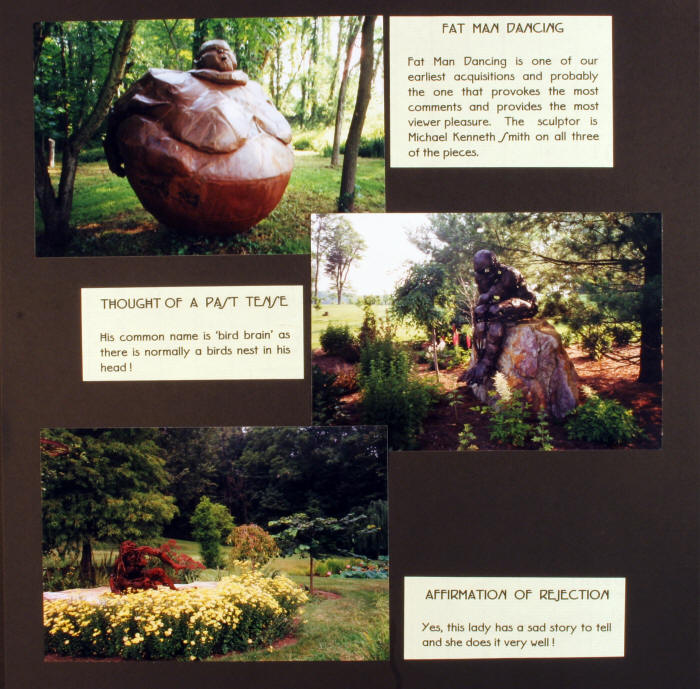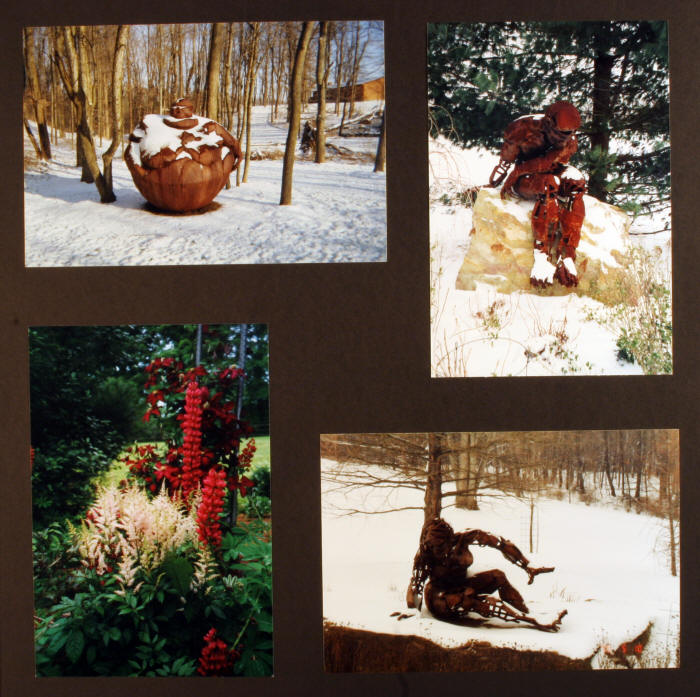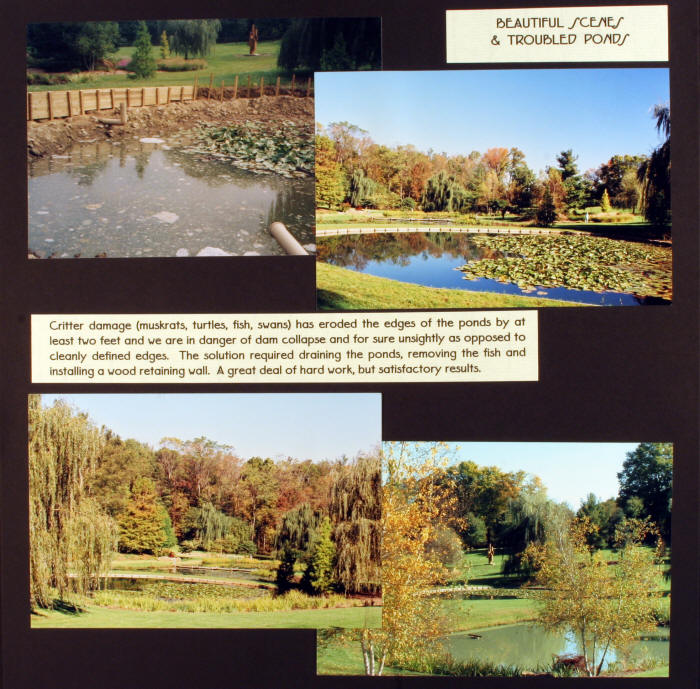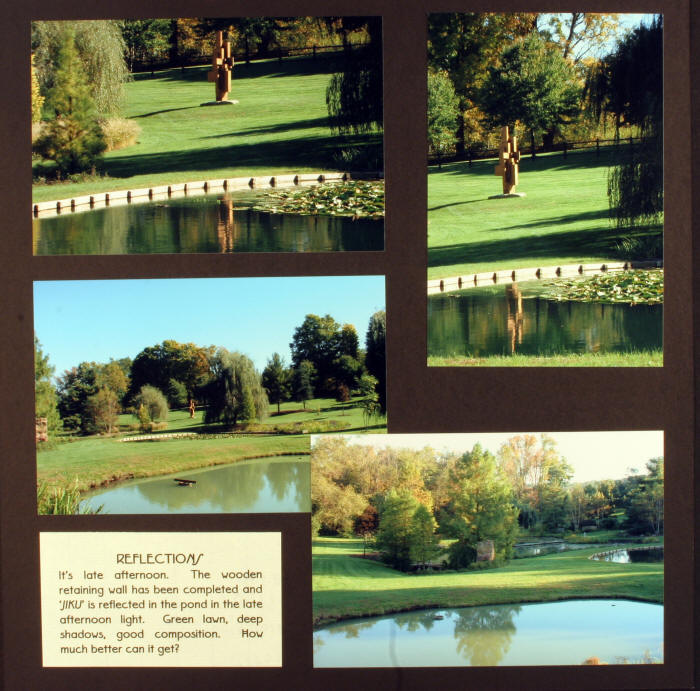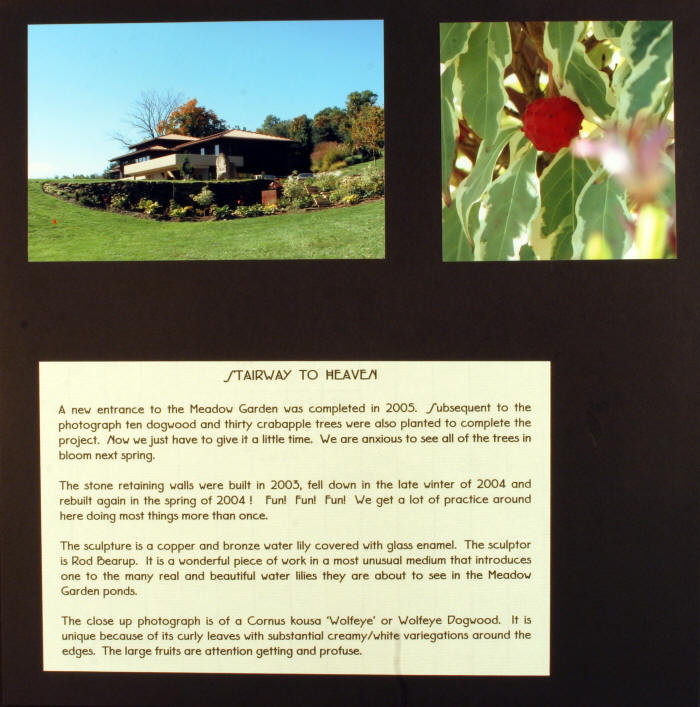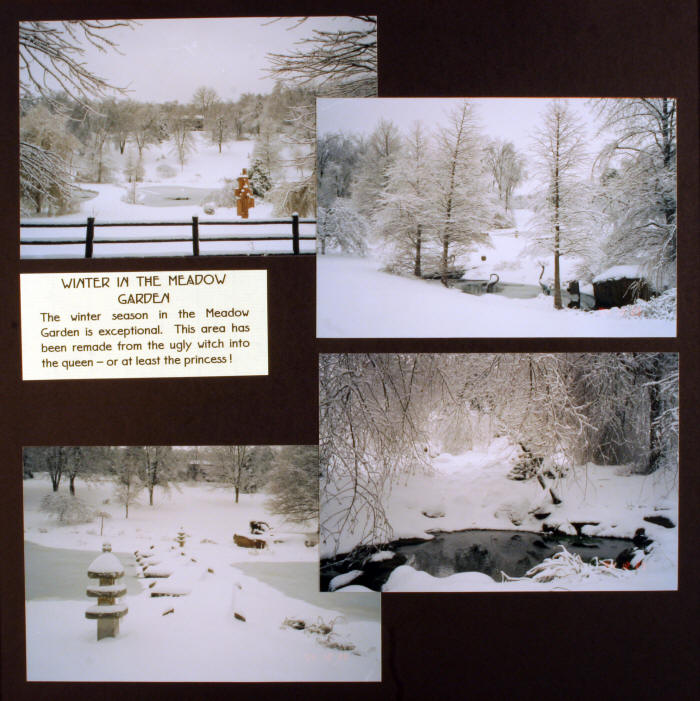
Four ponds and a grassy meadow are surrounded by a variety of plantings and sculptures. The ponds are the predominant feature of the garden and contain many colorful Japanese Koi. These fish have as their ancestors carp from China that mutated into a variety of colors and patterns.
Today, they are collected and raised worldwide and can be very valuable. They are exotic, but not tropical so they have no problem surviving in our temperate waters. Their companions in the ponds are a pair of Australian Black swans. Pair is correct in that there are two but they may not be mates, as they have never produced any offspring.
The plantings in the Meadow Garden are quite various and interesting. In the ponds themselves, many beautiful varieties of water lilies are present. One of two that have ever been patented is north of the Zigzag Bridge. It is called ‘Sunny Pink’ and has large and prolific blooms and they also stand high out of the water. In pond ten, nelumbo nucifera, the Sacred Lotus is nearly totally dominant. They are a remarkably handsome aquatic plant and have very showy blooms on long stems growing high out of the water. Their leaves are also quite remarkable in both their size and their ability to hold droplets of dew that are brightly reflected on a sunny morning. All of the ponds feature a number of marginal plants, principally Water Iris. They may be Iris Versicolor, Laevigata, Pseudacorus or Louisiana Iris. The Iris Pseudacorus commonly known as ‘Yellow Flag’ are all native and have volunteered in the lower ponds, as this was all swamp prior to the building of the ponds.
Of the four varieties of deciduous conifers in existence, two of them are planted in this area with two varieties of each. They are Taxodium distichum or Bald Cypress, Taxodium distichum var. imbricaatum Pond Cypress and Metasequoia glyptostroboides Dawn Redwood and ‘Gold Rush’. In addition, there is a Sequoiadendron giganteum ‘Hazel Smith’ Giant Sequoia from the collection of Chub Harper, a world famous rare conifer propagator and expert. The Dawn Redwood is a plant of interest as it was thought to have been extinct for many millions of years and was only identified in paleontology as existing with the dinosaurs. It was rediscovered in China in the mid 1940’s and has since become very popular. Gold Rush is an extremely golden mutation.
Of the four varieties of deciduous conifers in existence, two of them are planted in this area with two varieties of each. They are Taxodium distichum or Bald Cypress, Taxodium distichum var. imbricaatum Pond Cypress and Metasequoia glyptostroboides Dawn Redwood and ‘Gold Rush’.
The dominant piece of sculpture in The Gardens is ‘JIKU’, a twelve foot high bronze piece done by Richard Mayer of Columbus, Ohio in 2003. It was named by Ban Kajitani, a highly regarded ceramicist of Japan. ‘JIKU’ means ‘the center of’ which we think of as the center of our gardens and therefore the signature piece of sculpture for Schnormeier Gardens. There are also three very interesting pieces that display a sense of motion while being made of steel by Kenneth Michael Smith also of Columbus, Ohio. Those pieces are ‘Fat Man Dancing,’ Affirmation of Rejection’ and ‘Reflection of a Past Tense.’ There is no question that the artist has a sense of humor as well as of pathos.
The remaining sculpture/structure of interest is the Zigzag Bridge. In Japan the purpose of a Zigzag bridge (besides keeping you dry whilst crossing the water) is that in crossing it both ways it forces you to view all compass points of the garden therefore providing full appreciation for your surroundings. The Chinese on the other hand believe that ‘evil spirits’ can only travel in a straight line and you can ‘get them off of your trail’ if you cross a Zigzag bridge! You choose which approach suits you the best! Also, the bridge is anchored at both ends by hand carved granite pagoda like markers made in Japan.
We hope that you find peace in these tranquil surroundings.



